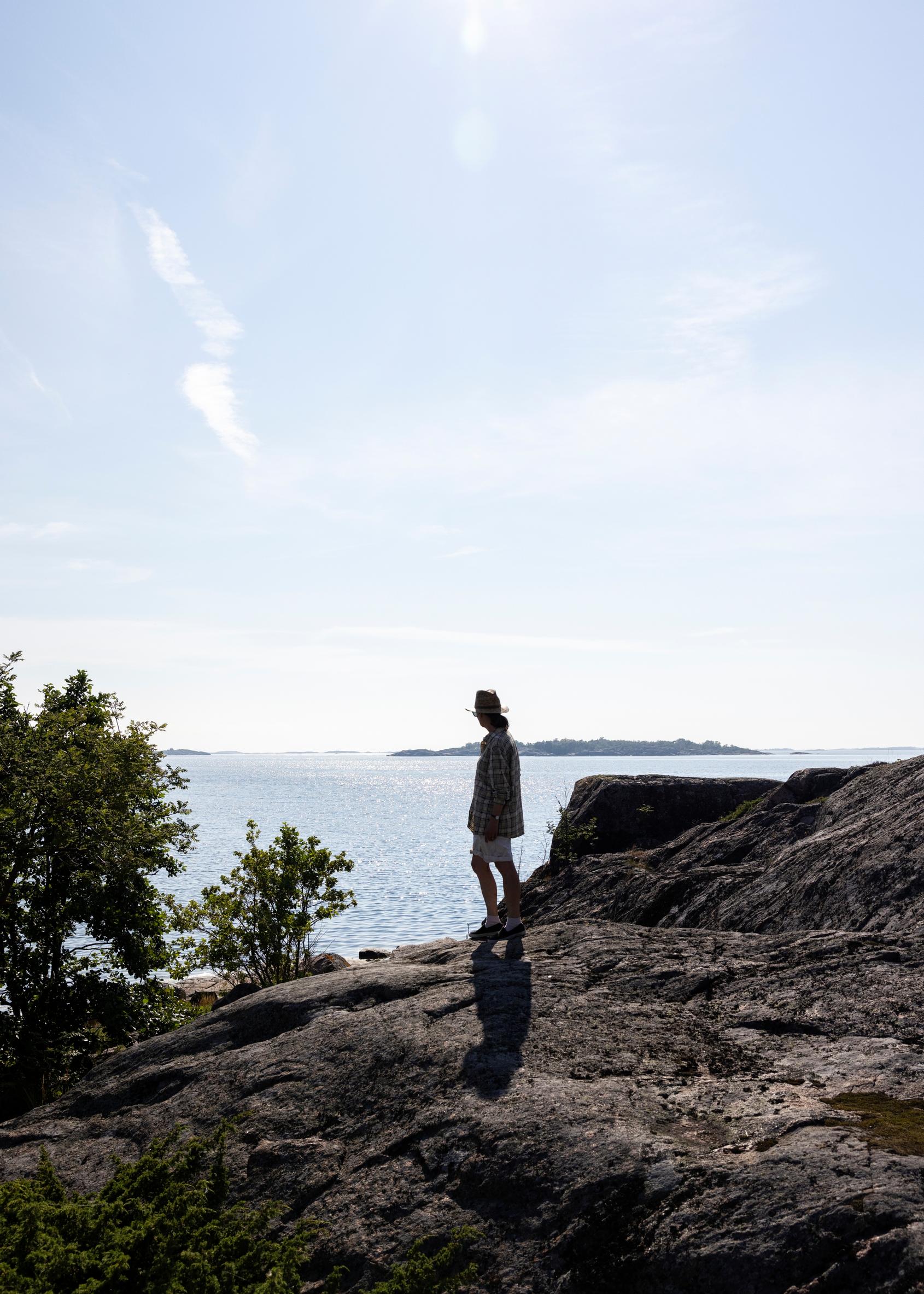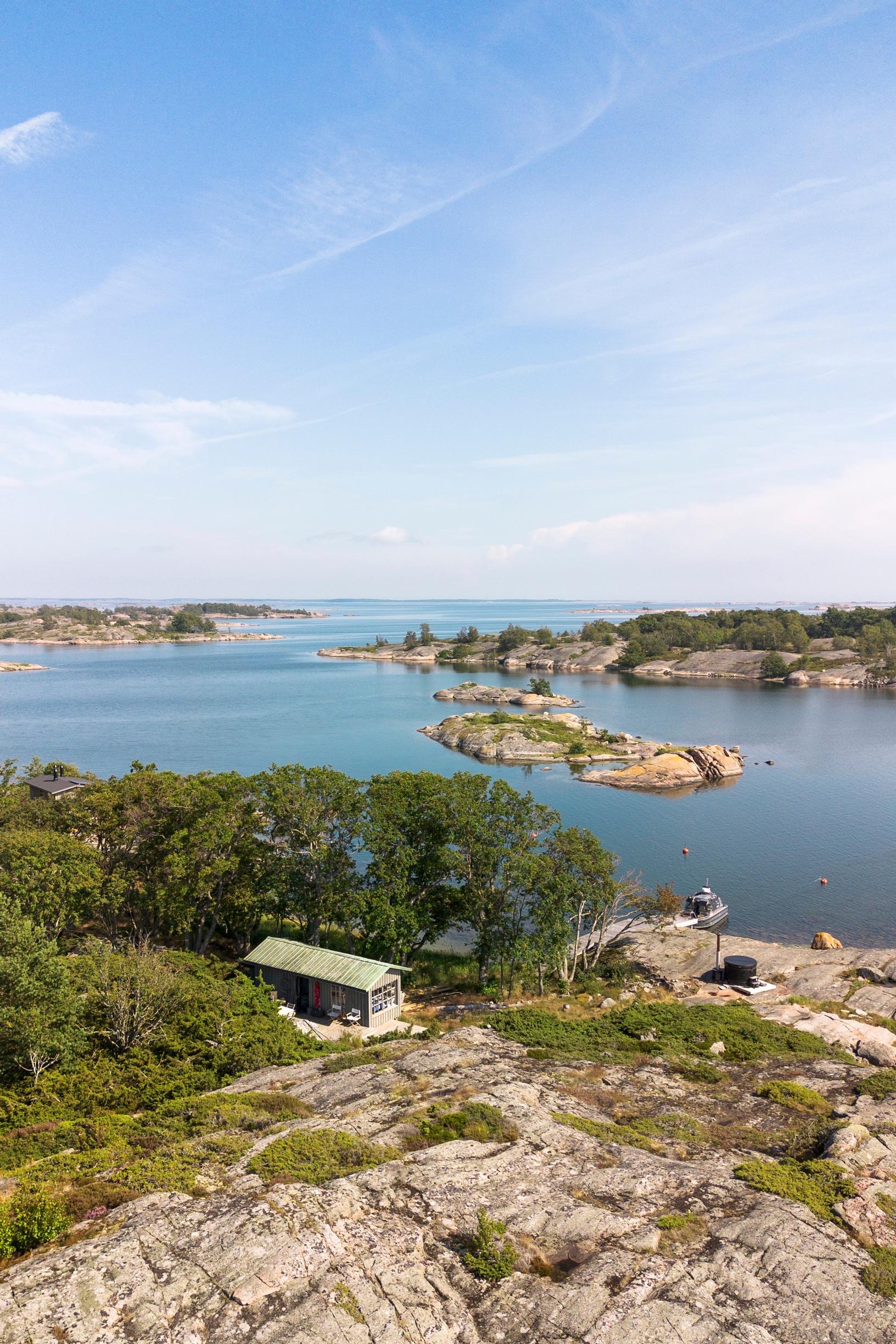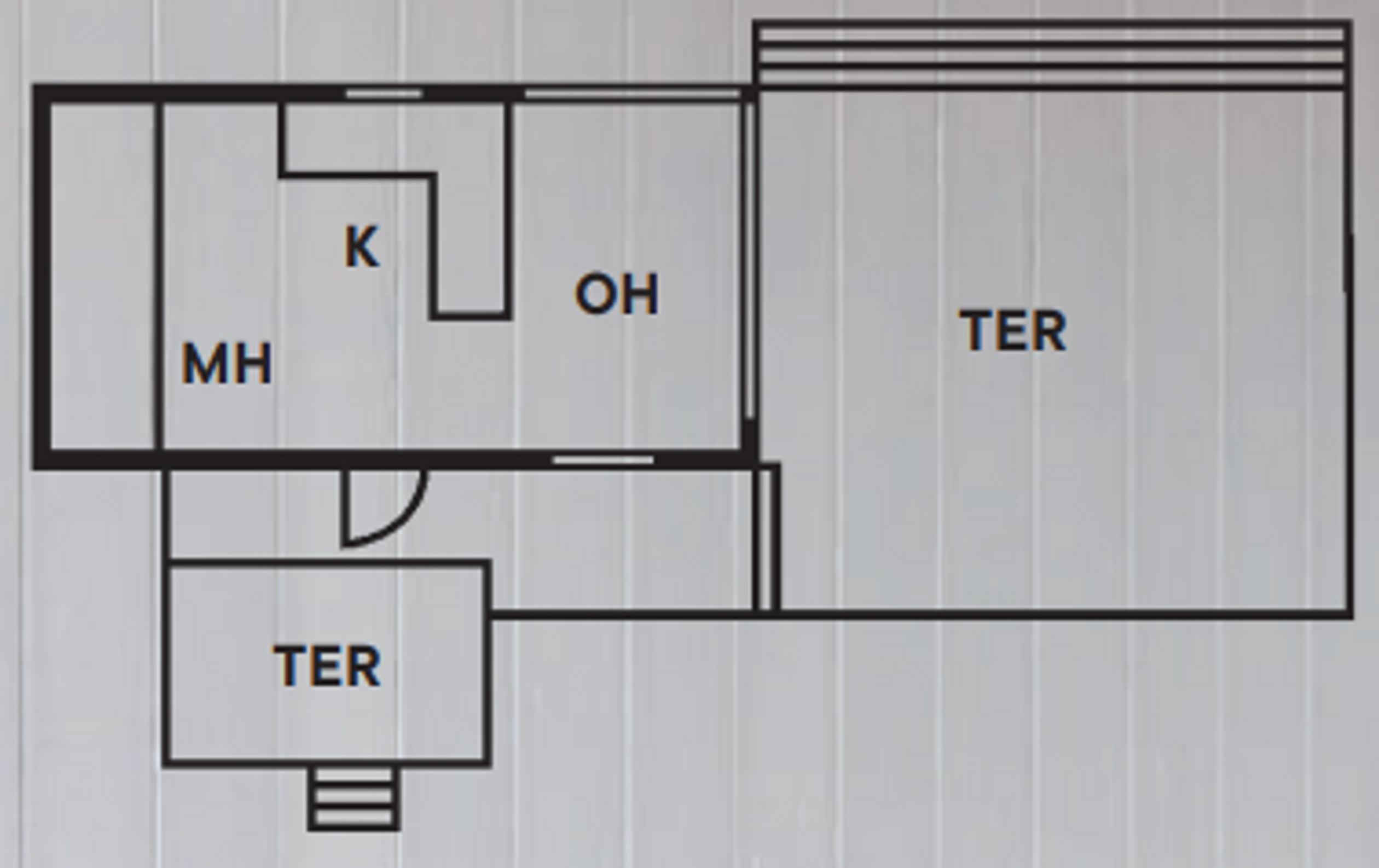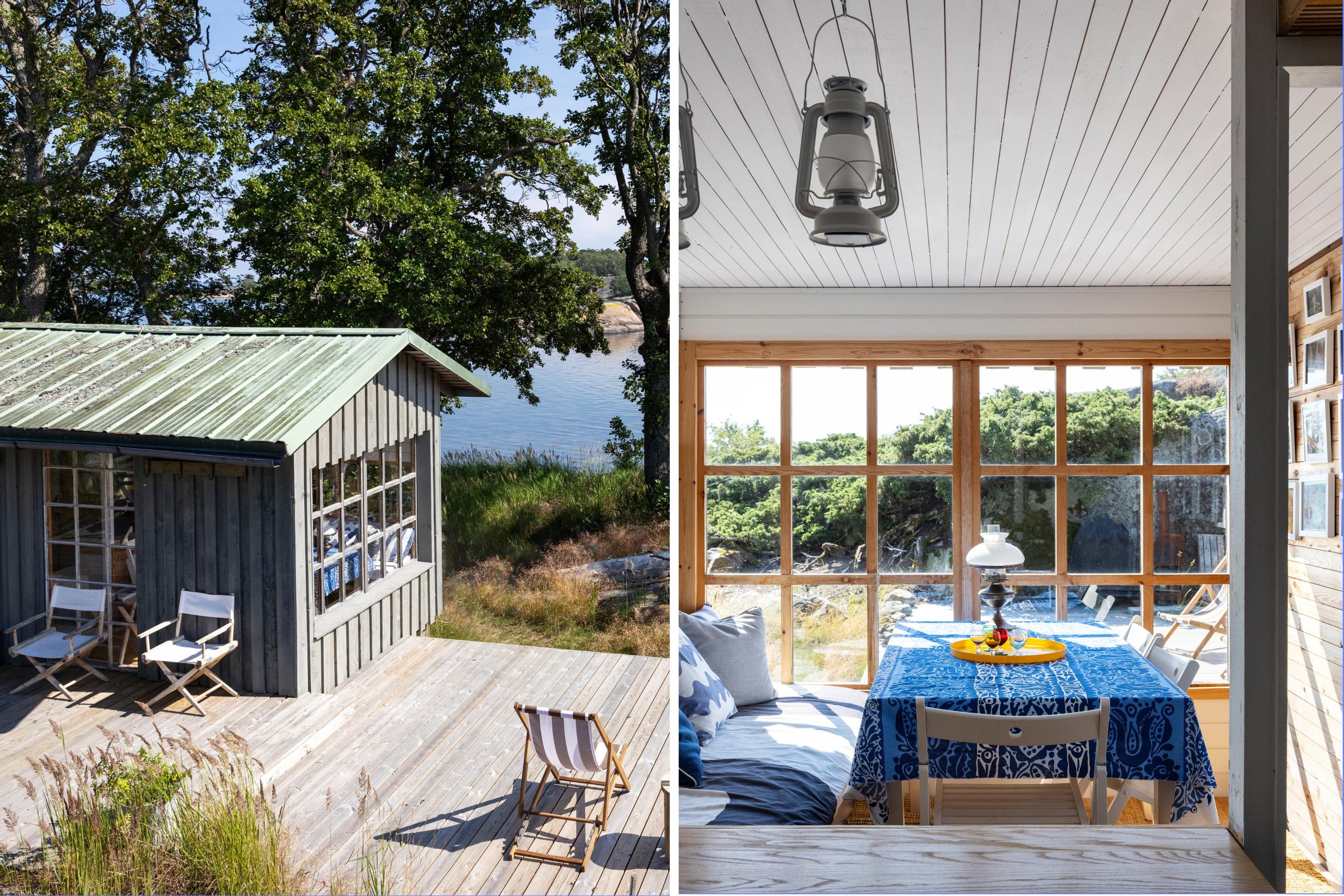
Unchanged for decades: rare Marimekko village cabin in Finland’s outer archipelago
On the rocky shores of the outer archipelago lies a cabin whose story is intertwined with the legacy of Finnish design and Marimekko. An essential element of this hideaway’s timeless design is the classic Palaset kitchen by Ristomatti Ratia.
residents Artist and designer Kerstin Enbom spent free time on the island with her family from the late 1960s until the early 2000s. The cottage and island are now cared for by new owners, who preserve its atmosphere and a piece of Marimekko history.
the cabin Built in the late 1960s as a prototype sauna for Marimekko’s Marikylä (Mari village) project, the structure was moved from Porvoo to Finland’s outer archipelago in 1969.
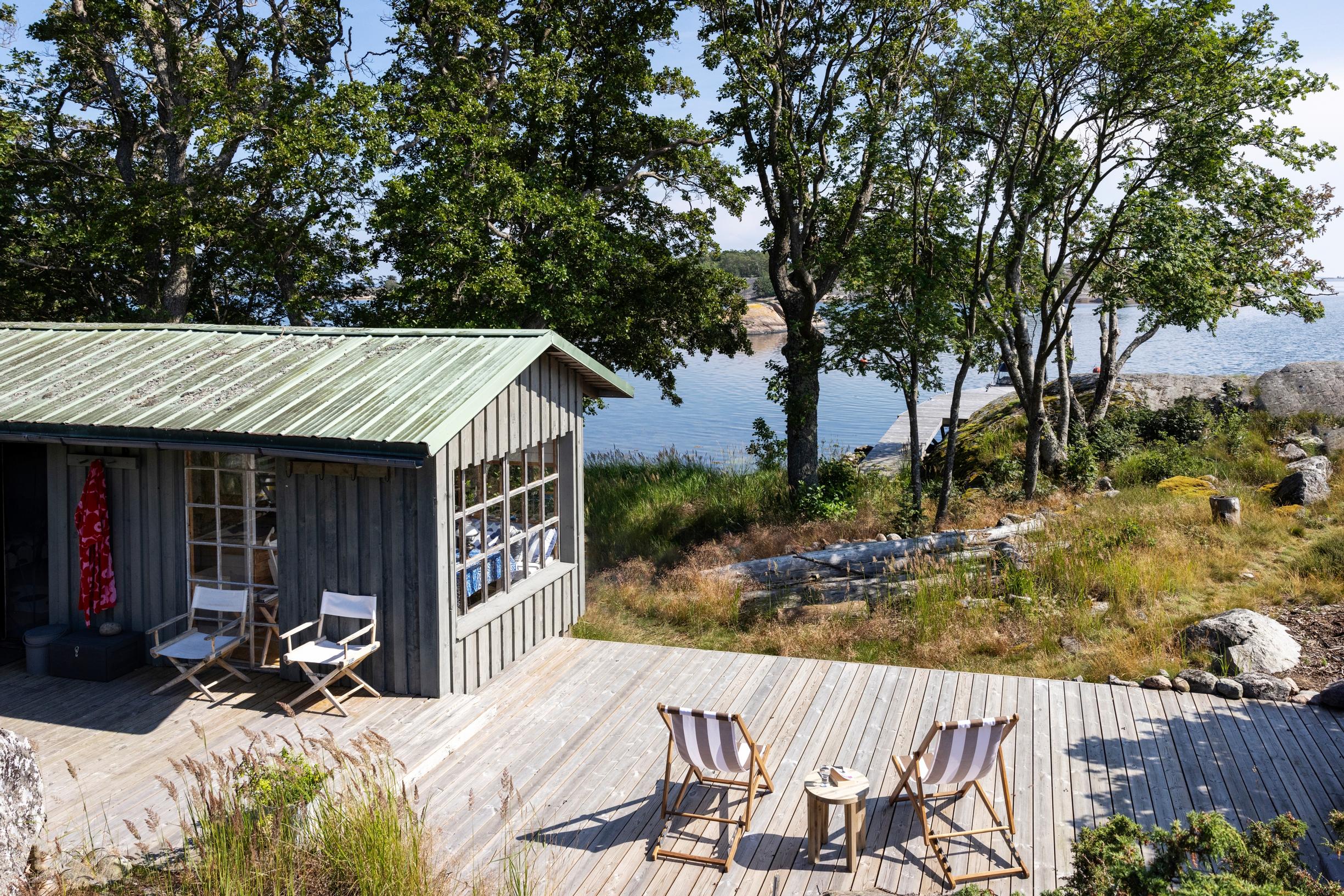
Originally, this cabin wasn’t located on an island but on the mainland over one hundred kilometers from its current location. It was built in Porvoo as a prototype sauna for Armi Ratia’s Marikylä (Mari village) concept in the late 1960s, designed by architect Aarno Ruusuvuori. The concept’s forward-thinking, perhaps even utopian, idea was to create a creative community where Marimekko people would both work and live in homes that were beautiful, simple, and close to nature.
When the Marimekko village ultimately remained just a dream, Kerstin Enbom and her then-spouse Ristomatti Ratia took this one building with them and relocated it by sea to the stark outer archipelago. Over the years, the original flat-roof design was replaced with a pitched roof, new grid windows, and siding, so it has changed considerably from its original state and no longer bears the typical hallmarks of Ruusuvuori’s architecture.
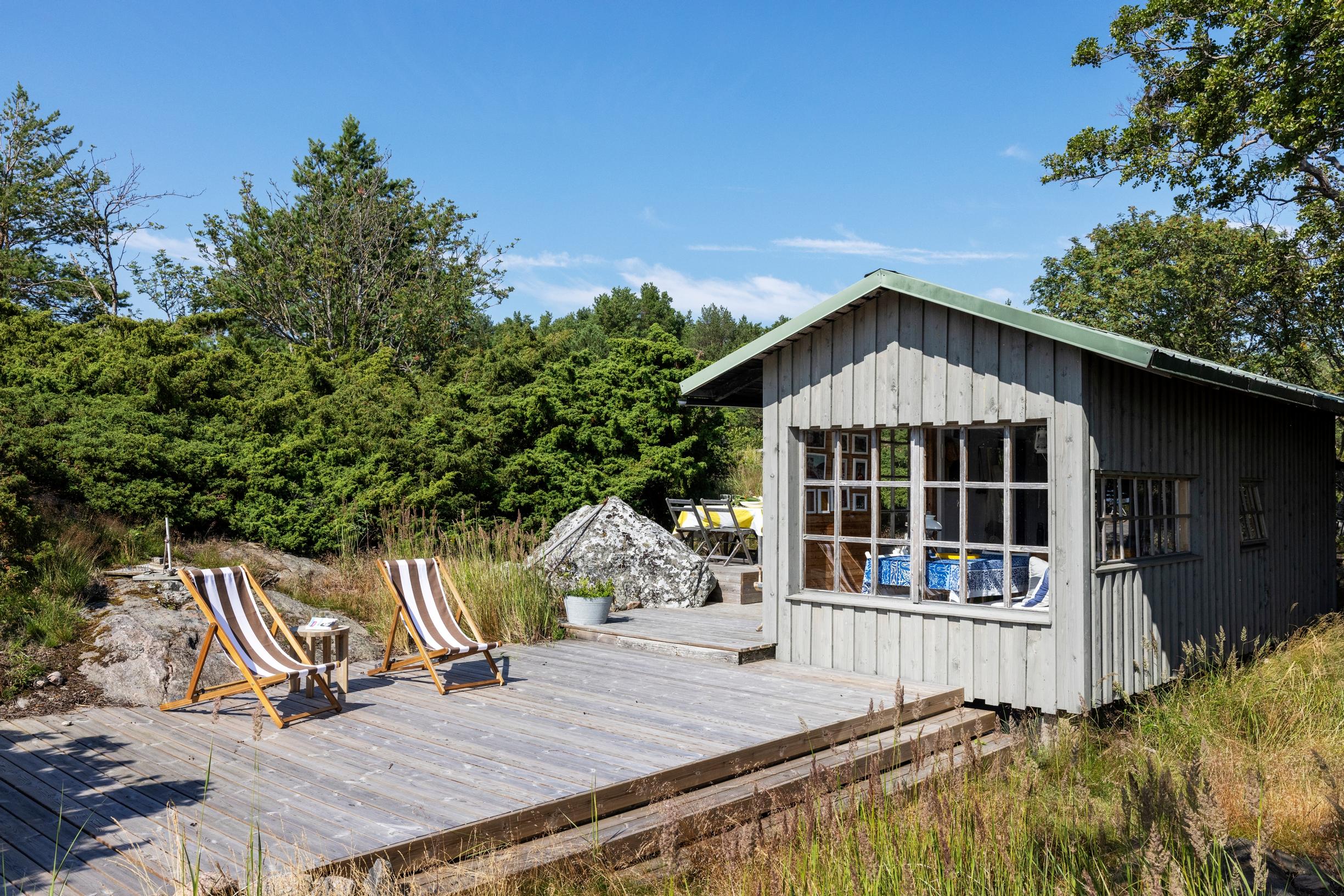
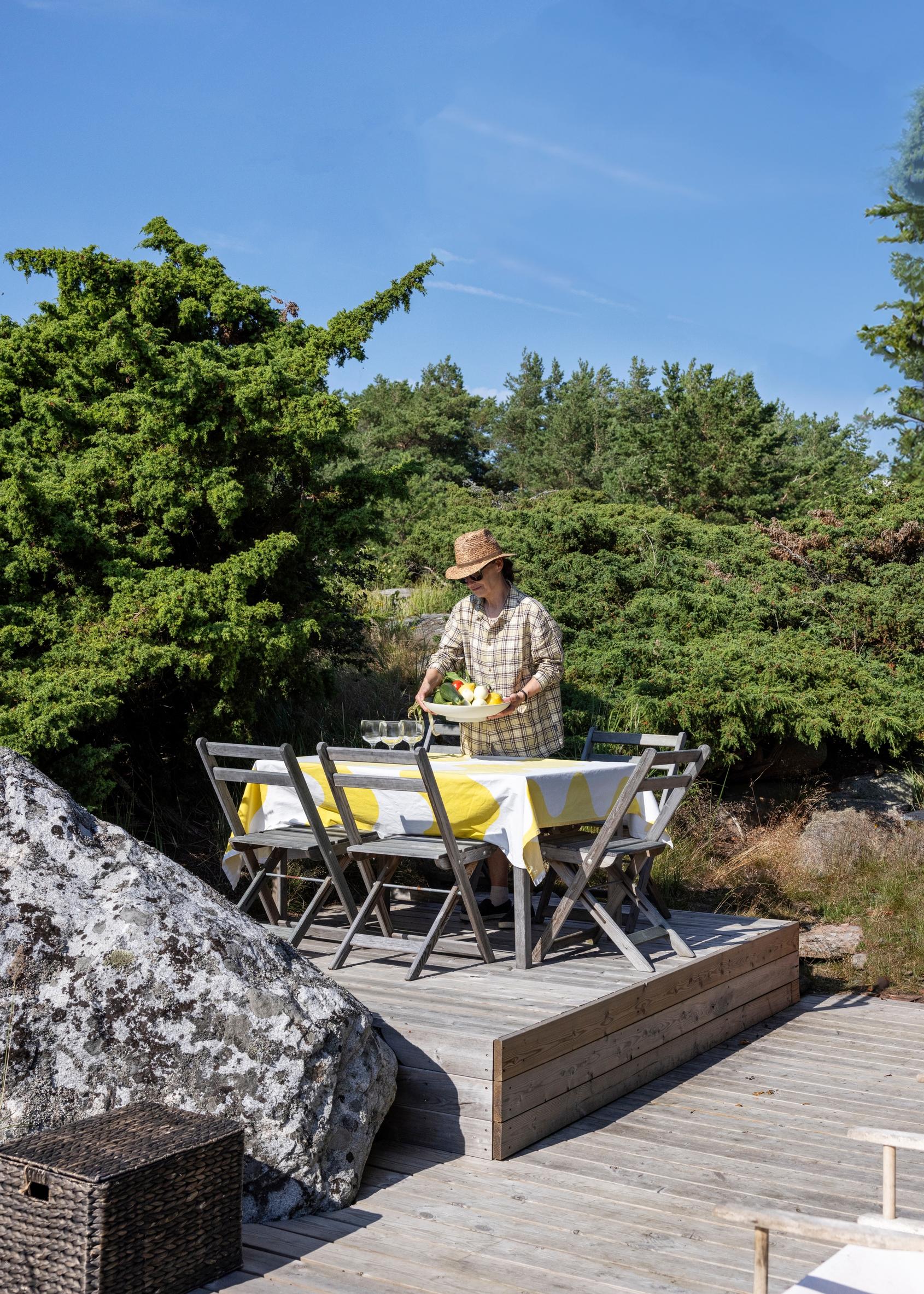
For four decades, Kerstin spent unforgettable summers embraced by the island with her family. With her second spouse Sten Enbom she cared for the island and maintained the cabin until around the turn of the millennium.
“They were happy summers. Life on the island was simple but all the richer for it. When everything nonessential stayed on the mainland, we could focus on what mattered: we made simple meals, ate outdoors, swam, and sunbathed,” Kerstin recalls.
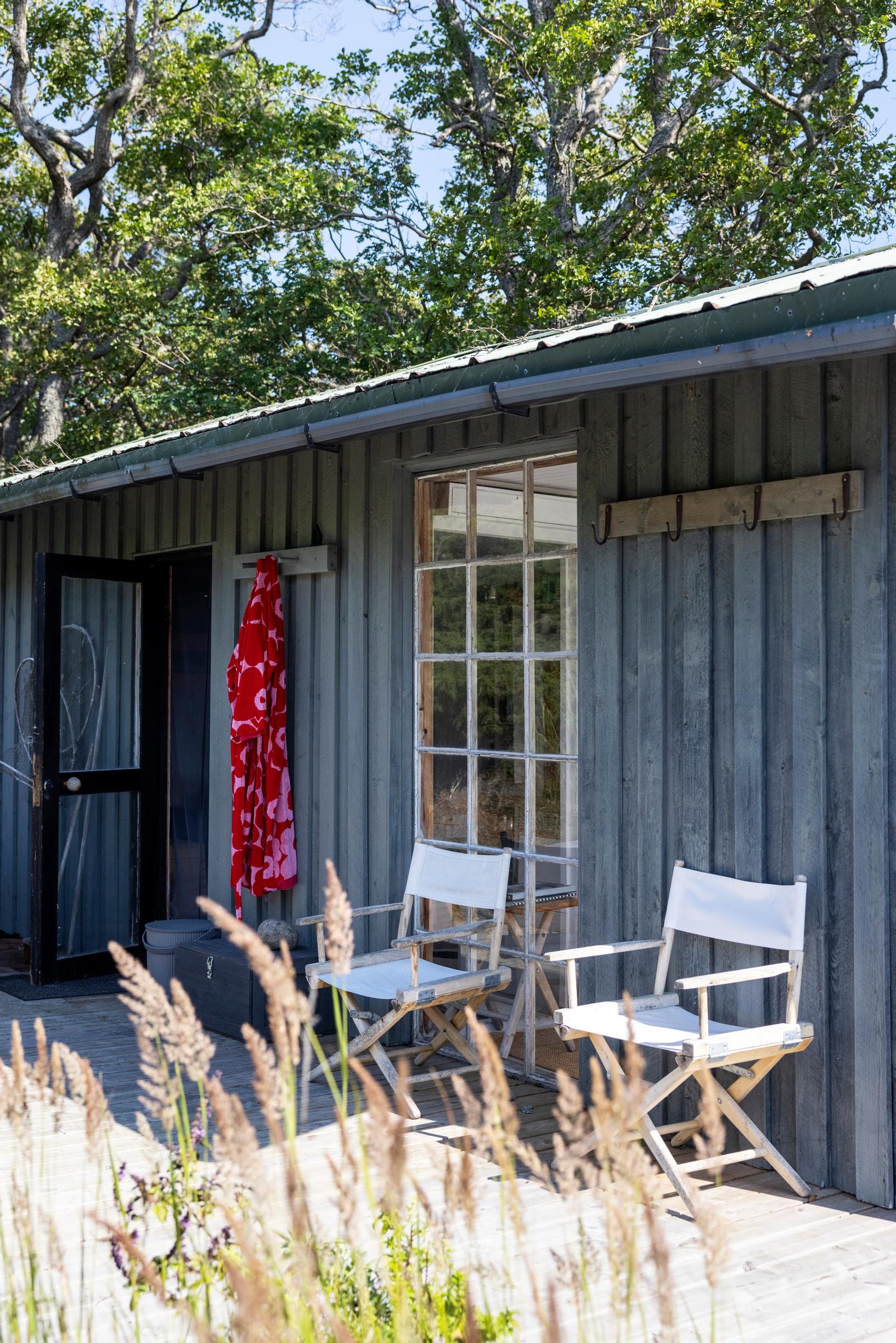
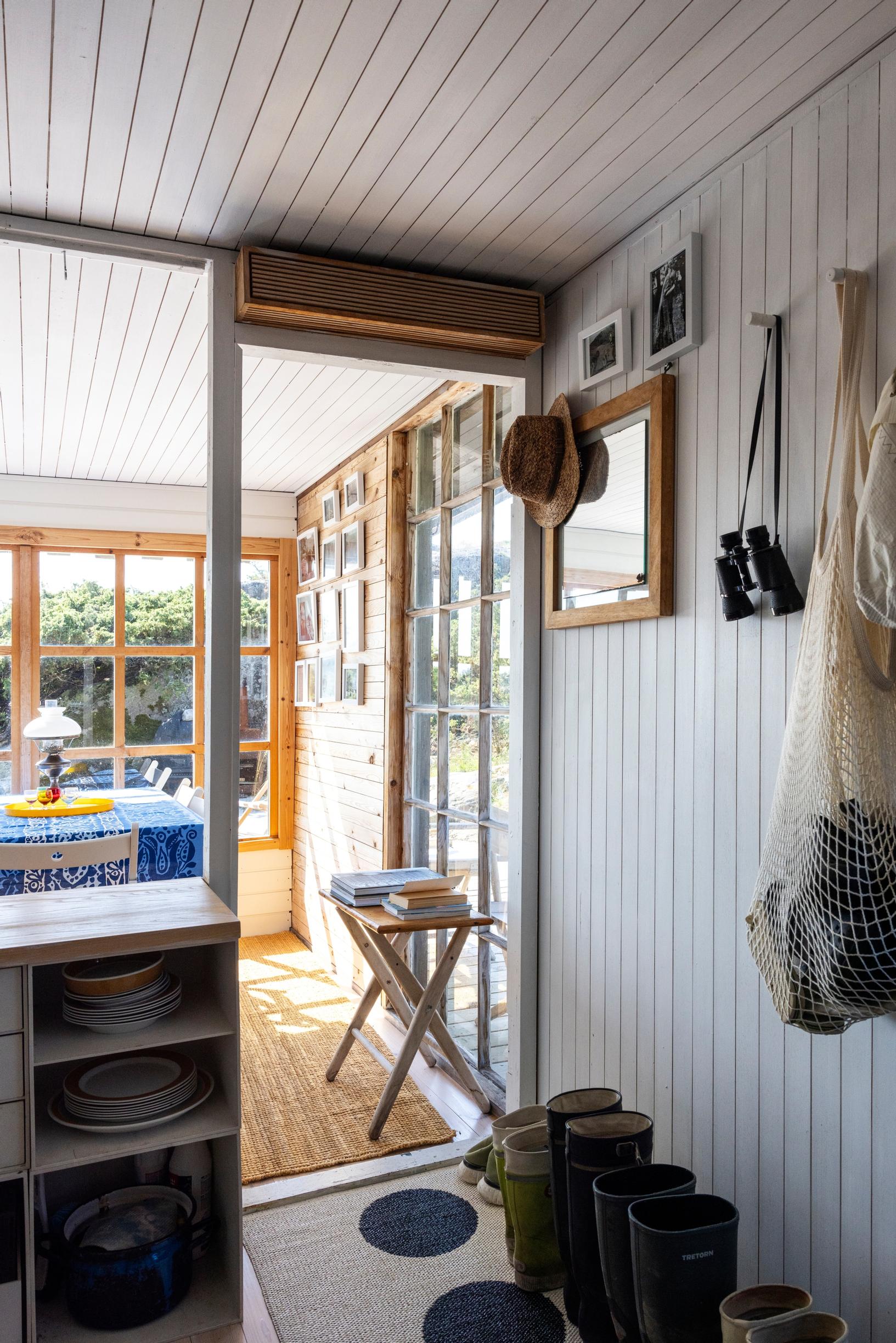
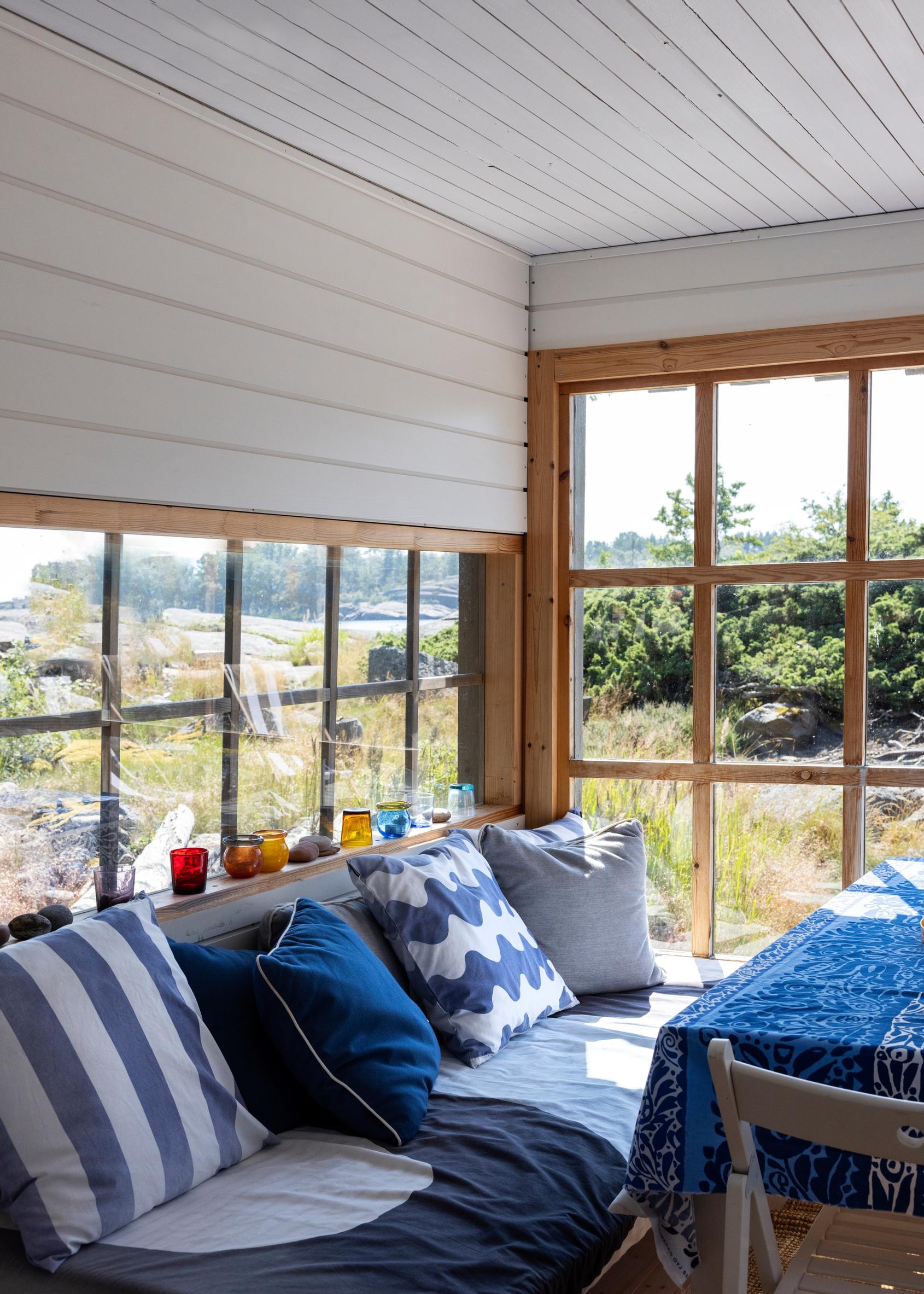
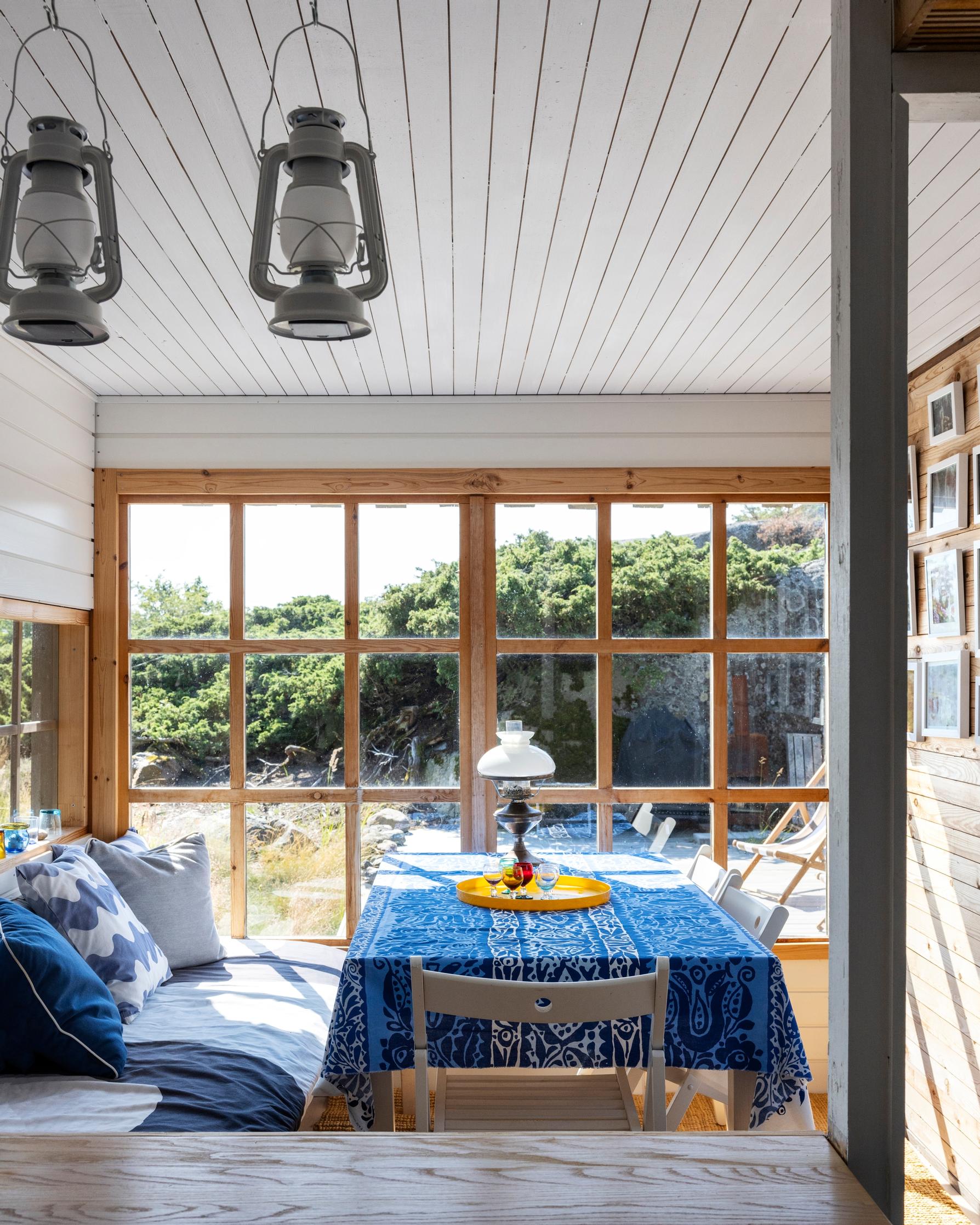
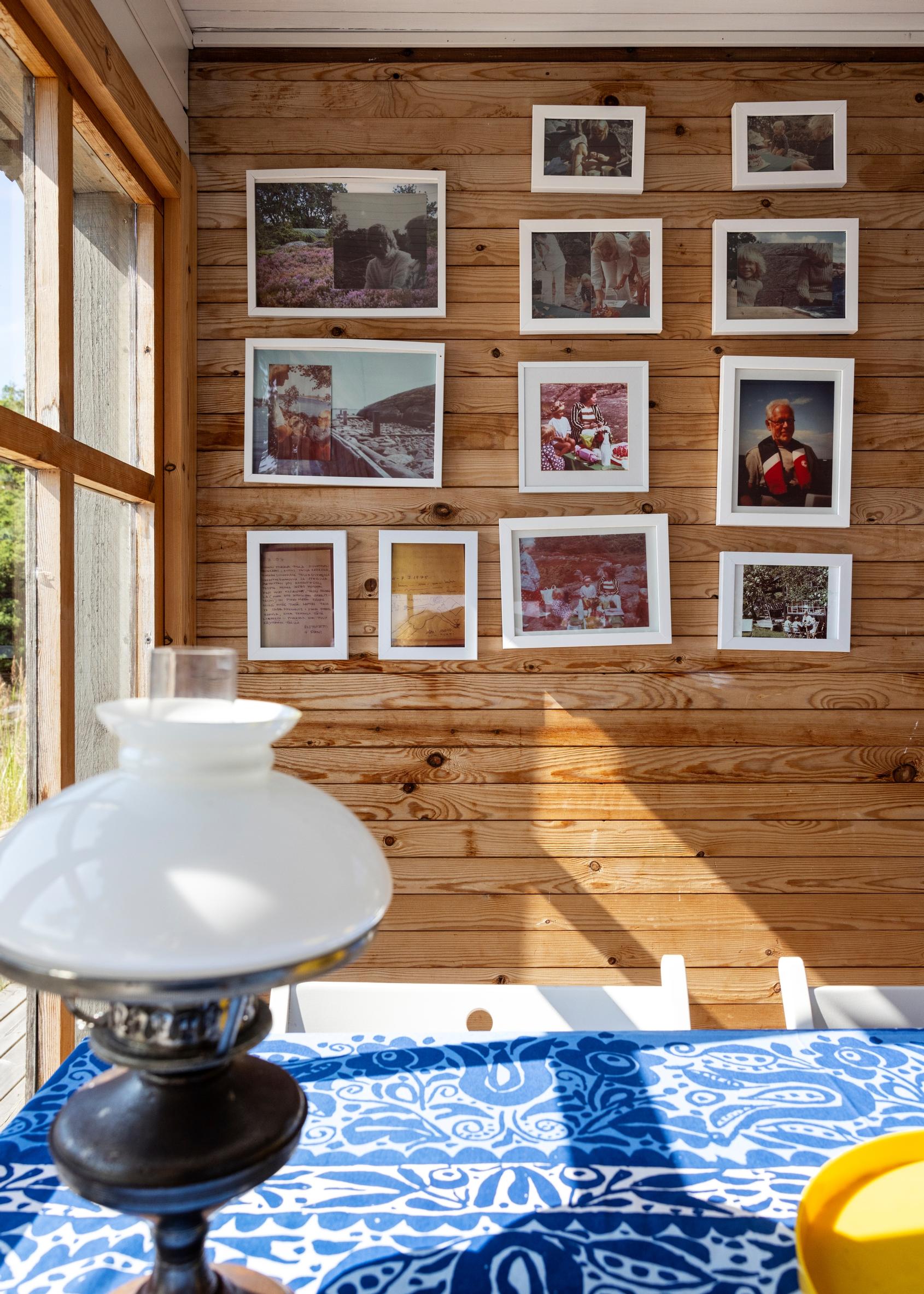
Many might think that an island in the outer archipelago is quiet and even lonely. On the contrary, the mornings Kerstin and her family spent there were filled with outdoor exploration, the afternoons with the salty scent of the sea, and the nights with parties and laughter among friends and family.
Renowned figures from Finnish cultural life, art, and theater arrived here by boat and even by seaplane. What awaited them was a simple life, centered on hands-on activities and an unhurried tempo.
“One summer, I ran an extension cord for the landline phone out the cabin window so I could chat with a friend while basking in the sun. There I was on the edge of the rock, sipping red wine and mentioning that we were expecting tenderloin to be delivered by boat from the village shop. I laughed at how a person can really maximize the joys of simplicity when it suits them,” Kerstin reminisces about the island’s magic.
The new owners have wanted to retain everything essential. They say nothing has been updated without careful consideration.
When Kerstin and her family’s visits to the island became less frequent due to aging, she was happy to find new owners who saw the cabin as an important piece of Finnish design history.
The cabin is still actively used and has remained almost unchanged since the Enbom era. The new owners have wanted to keep everything that matters. They say nothing has been replaced without thoughtful consideration. The original cabin is maintained as needed: the old windows have been renovated, and only one window had to be fully replaced.
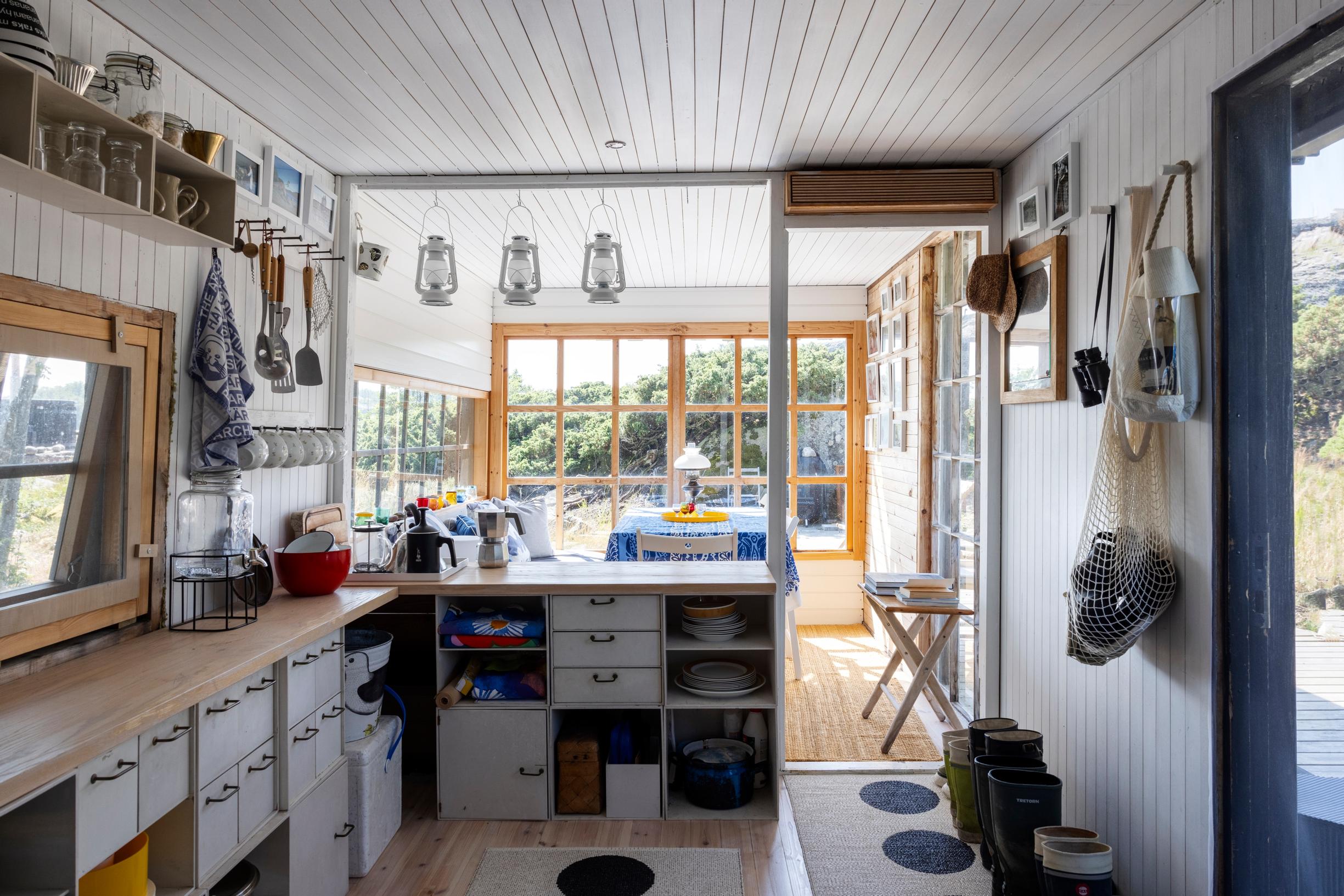
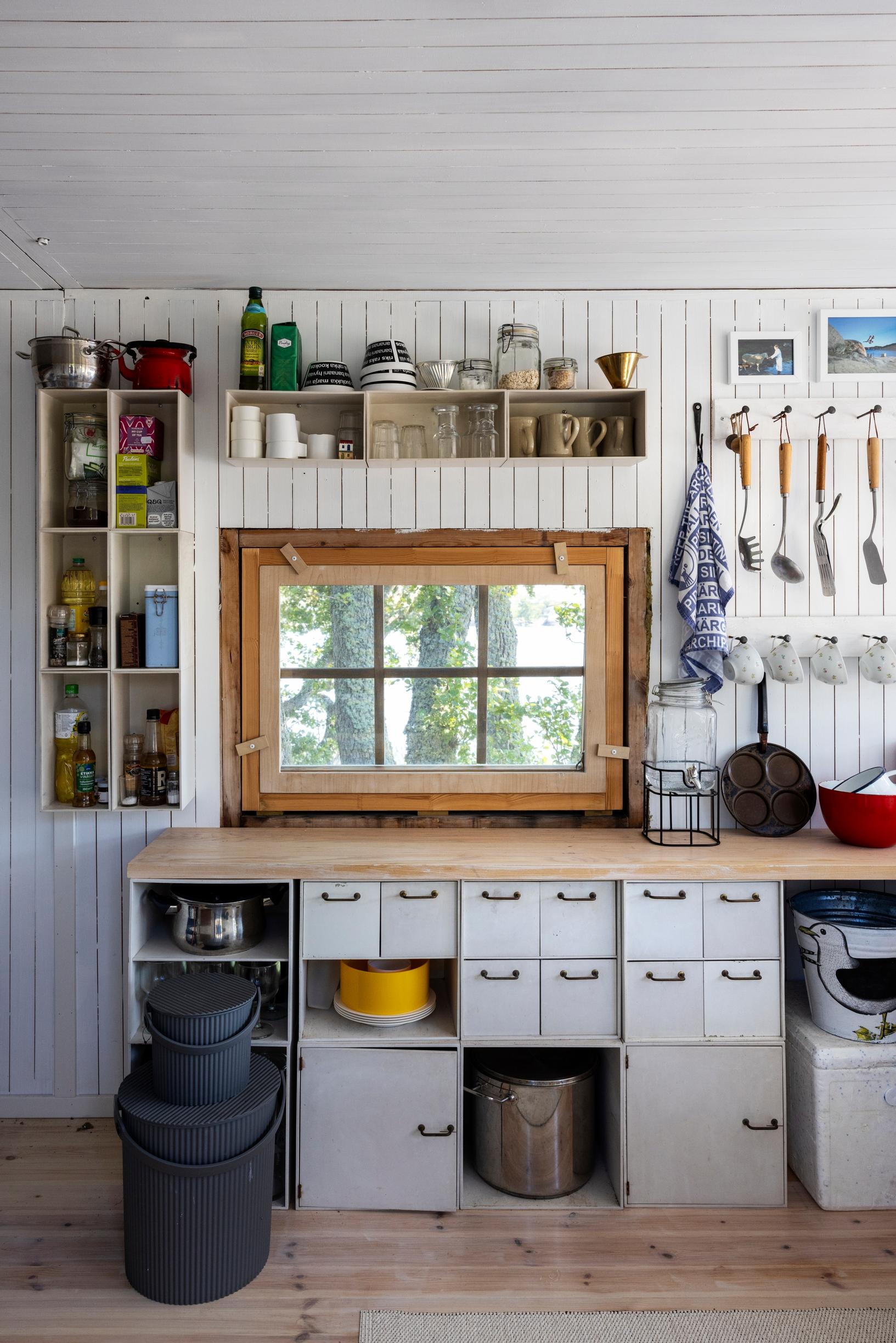
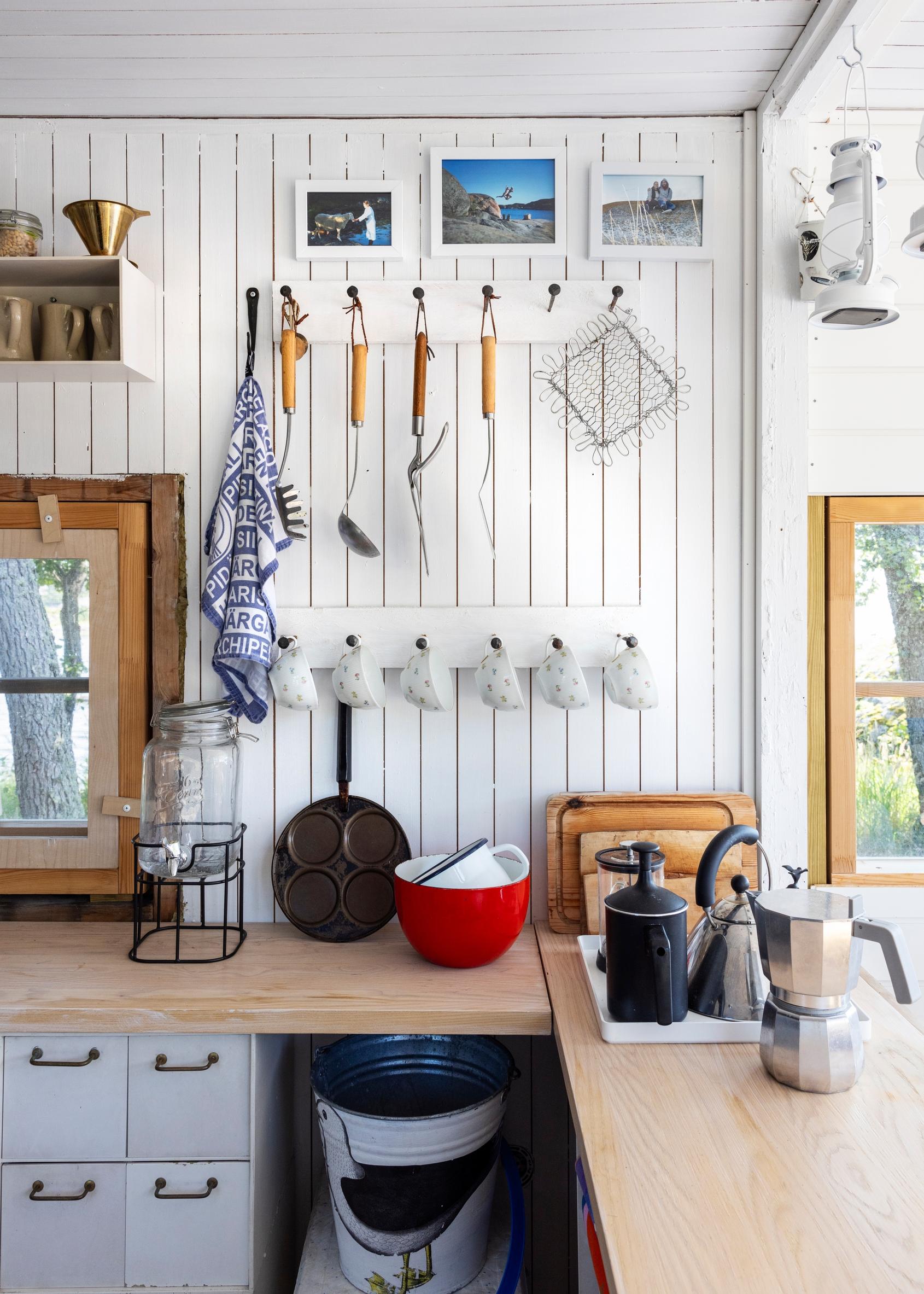
A small sauna building has been added alongside the main structure to support everyday living, with architecture and proportions that honor the original aesthetic of restraint and closeness to nature.
The new owners have also built sturdy, reliable piers, ensuring you can arrive and depart under any weather conditions. The island is allowed to remain its true self, shaped by nature.
The cabin’s interior has remained largely as it was during Kerstin’s time. Natural materials still take center stage, the furniture remains the same sturdy, simple pieces year after year, and the pops of color come from Marimekko patterns.
At the heart of the little cottage lies a kitchen built from Ristomatti Ratia’s Palaset series — a design so enduring it has never needed to be altered. For Kerstin, her grown children, and even the cottage’s new owners, the Palaset kitchen remains a defining feature of the home. First introduced in 1972, the modular Palaset collection stands as a striking example of truly timeless design.
When the island property was about to pass into the hands of its new owners, Kerstin and Ristomatti’s daughter Anna requested that the skipping stones collected during her childhood remain on the windowsill, exactly where they had always been. And there they still are, symbolizing the importance of memories and remembrance.
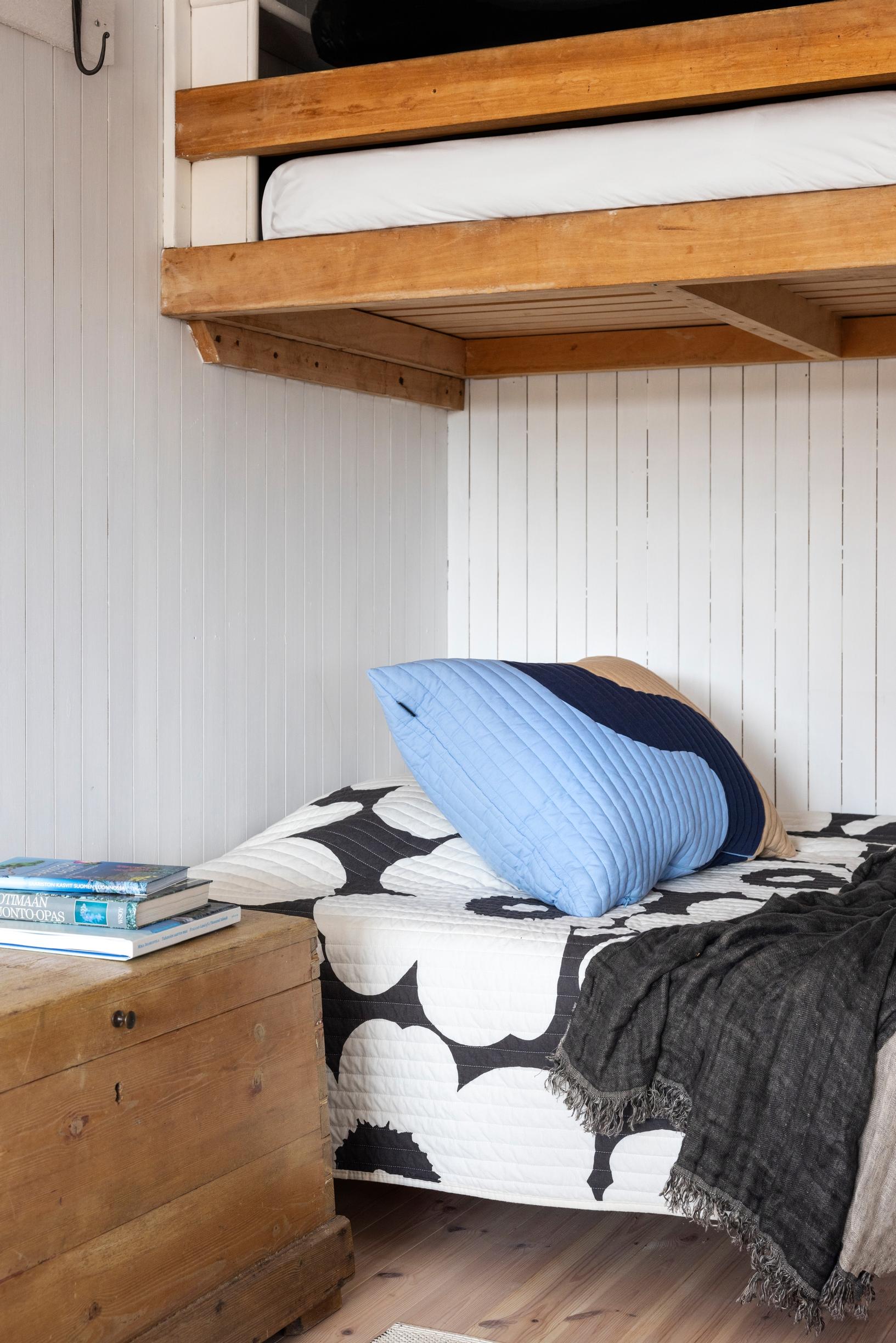
The outer archipelago is a region, where both the conditions and the landscape repeatedly remind us of our smallness. Here, life has always been lived in a way that falls into the rhythm they set.
The sea’s color shifts with the daylight and wind, precious rainwater gathers in the cracks of the rock, and in the evening, the light pours through the windows in a way that can’t be replicated.
“I especially loved the sheltered smooth rocks, where the wind never reached. I would often slip away there to read detective novels. The waves murmured in the background, and the outside world faded away. It was my own place of calm,” Kerstin explains.
This cabin testifies to the allure of a life close to nature and to an understanding of what is truly essential.
